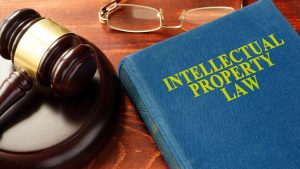
(Image via Getty)
Over the summer, I spent some time reading the works of Wharton’s Jonah Berger, which I think have relevance to any litigator. We do have to persuade people after all. But this is not a column about persuasion techniques, or even my main takeaways from Berger’s oeuvre. Instead, I want to focus on an observation that I recall reading in one of his works, related to Apple’s continued success in helping shape customer preferences through design decisions made with respect to their products. In one famous example, Steve Jobs himself was involved in deciding the orientation of the Apple logo on the back of the MacBook — so that the logo would look best when viewed by others while the user of the laptop had the cover flipped open. Apple’s attention to such small details has been a major contributor to the outsized success enjoyed by their products.
As another example, we can consider the ubiquitous (but not cheap, and unfortunately very easy-to-lose) Apple Airpods. A simple device, with a host of competitive options available to consumers. But despite their simplicity and the stiff competition in the headphone/earbud space, Airpods have taken off in a huge way. One contributor to that consumer uptake, at least according to Berger’s outlook on drivers of customer behavior, was the decision to make Airpods white. Why? Because we as customers are influenced by the decisions of other shoppers. Being white, Airpods are easily spotted in the ears of their owners. Seeing them in the ears of others spurs non-Airpods owners to buy their own pair, while also validating the decision of existing owners to purchase the product. Put another way, the white color of Airpods helps them stand out in a crowded marketplace (or pre-COVID subway car,) while providing incentive for an ever-greater cohort of consumers to join the club by choosing Airpods for their audio-delivery needs.
Considering the popularity of Airpods, it should not be a surprise that Apple has taken legal steps to help stem the tide of unauthorized Airpods alternatives flooding the market. First and foremost, Apple has trademarks on the Airpods name, as well as the brand name Apple. Those are critical to Apple being able to stop counterfeit Airpods from flooding the market. And by counterfeit, I mean real counterfeits, not just non-Apple branded knockoffs that are easily recognized by customers as Fairpods (or fake Airpods). But even with respect to Fairpods, Apple also has design patents in its arsenal to stop potential infringement, as well as a recently registered trade dress registration (Reg. No 6072526) for the configuration of the Airpods. Or in trademark speak: “configuration of a pair of ear buds in a charging case, featuring smooth, rounded edges and an oblong head for the ear buds, a rectangular shape with smooth round edges for the case, and hinged lid that opens at the top of the case.”
This product configuration mark for Airpods made the news (in both the tech press and for some reason, a leading travel blog) last week, in a very interesting context — where U.S. Customs and Border Protection (the CBP, whose IP protection efforts have been chronicled on these pages) announced the seizure of “counterfeit” Airpods. While such seizures are likely fairly routine due to CBP’s diligent efforts, this one got a lot more attention. Primarily because the products seized were not counterfeit Airpods at all, but rather (pretty expensive) branded alternatives from the large Chinese smartphone maker OnePlus. But product similarity was not really the main story, at least initially, with most outlets choosing to bash CBP for promoting its seizure as one of “counterfeits.” But those same bashers had less to say about whether CBP was correct in seizing the OnePlus Buds for trade dress infringement. While the seized OnePlus Buds clearly sported OnePlus-branding — and were thus not counterfeits — they had also been heralded as “cheap Airpods for OnePlus phones,” at least according to a review that touted their “Airpods-like rigid design.” Such comparisons make CBP’s seizure a lot more plausible.
Like other media outlets, I reached out to CBP’s press agent the day of the seizure announcement and was provided the following statement: “Upon examining the shipment in question, a CBP Import Specialist determined that the subject earbuds appeared to violate Apple’s configuration trademark. Apple has configuration trademarks on their brand of earbuds, and has recorded those trademarks with CBP. Based on that determination, CBP Officers at JFK Airport have seized the shipment under 19 USC 1526 (e). CBP’s seizure of the earbuds in question is unrelated to the images or language on the box. A company does not have to put an “Apple” wordmark or design on their products to violate these trademarks. The importer will have many opportunities through the adjudication process to provide evidence that their product does not violate the relevant recorded trademarks.” In short, CBP was doing its job and enforcing Apple’s registered trademark, which was apparently also properly recorded with CBP. Again, considering that at least one prominent review of the OnePlus Buds noted their design similarity to Airpods, it should not be a surprise that CBP took action.
Ultimately, while Apple is happy — and OnePlus not pleased — with CBP’s latest seizure, this entire situation reinforces a few things of interest to IP lawyers and their clients. For one, it underscores the importance of building as much IP protection (over time) for hit products as possible, if only to take advantage of such benefits as summary seizures by CBP of potentially infringing products. Second, it adds fuel to the fire around whether CBP has too much power to make such summary adjudications (with immediate consequences for alleged infringers) or whether Congress should be giving even more bite to CBP’s bark when it comes to IP protection — such as with respect to design patents, as discussed in my column on the topic last December. There, I wrote that “[G]reat care would be needed to avoid gaming of the system by design patent owners, in terms of having CBP adjudicate infringement against competitors without the legal protections afforded by an ITC or District Court case.” In considering that important question, evaluating whether this recent Airpods episode led to a desired result should be part of the analysis undertaken by Congress, along with the views of IP academics who have studied these issues. In the view of at least some, CBP has proven up to the task of policing IP infringement. Others have taken a more critical view. For now, however, CBP has served notice that it can and will exercise its ability to deem products as counterfeit and seize them based on visual comparison with registered marks recorded with CBP. Good news for IP owners, as well as a warning to infringers, particularly those who depend on importing their wares into the United States.

How Legal Intelligence Is Bringing In A New Era Of Litigation For Plaintiff Firms
Darrow is building a new category of legal intelligence — one that helps firms understand complex legal landscapes earlier, more clearly, and with greater confidence.
Please feel free to send comments or questions to me at [email protected] or via Twitter: @gkroub. Any topic suggestions or thoughts are most welcome.
Gaston Kroub lives in Brooklyn and is a founding partner of Kroub, Silbersher & Kolmykov PLLC, an intellectual property litigation boutique, and Markman Advisors LLC, a leading consultancy on patent issues for the investment community. Gaston’s practice focuses on intellectual property litigation and related counseling, with a strong focus on patent matters. You can reach him at [email protected] or follow him on Twitter: @gkroub.
